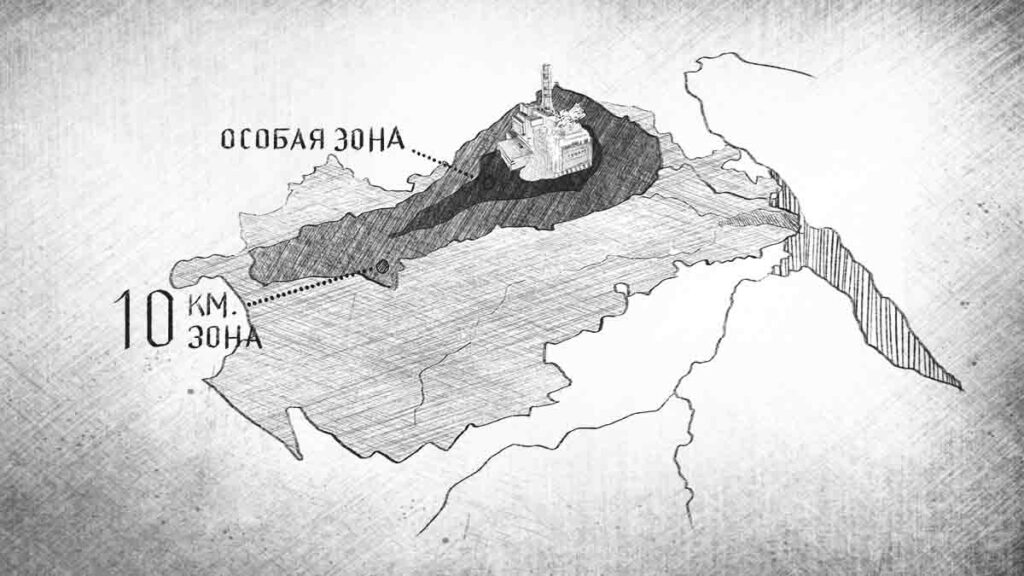
The world became aware about the disaster at the Chernobyl nuclear power plant, which occurred on April 26, 1986, only a few days after the tragedy. It is finally unknown about the consequences until now. The radioactive clouds that formed as a result of the explosion of the reactor moved rapidly towards Europe and spread their dangerous particles for the most part.
According to experts, the contamination of the territory after the Chernobyl accident depended on weather conditions. A huge amount of various radionuclides got into the atmosphere. According to official figures, more than 200,000 square kilometers were contaminated.
Pollution initially spread to the west, southwest, northwest, to the Scandinavian countries. Air masses spread throughout Latvia, Estonia, Lithuania, Poland and the countries of Scandinavia. Then, the clouds with abundant radiation precipitation moved south and southwest: Romania, Bulgaria, further west: southern Germany, Italy, Austria, the alpine part of Switzerland. Approximately 70% of hazardous precipitation occurred in Belarus, Russia and Ukraine.
Carpathian Mountains partially saved from radiation Transcarpathia and Hungary
According to experts of the Transcarpathian exploration expedition, it was the Carpathians that detained the cloud from Chernobyl, and then atmospheric flows “drove” it to the north. Thus, the majestic Carpathian ranges, the peaks of twilight and pines leaving for the sky, became a kind of buffer, thanks to which Europe did not feel a massive radiation impact. However, they still managed to fall out in the Carpathians. Places with an increased background of radiation were recorded in high mountain valleys.
The Chernobyl disaster was learned from the foreign press in neighboring Hungary. On May 4, the Hungarian press received a comforting message that the radiation background was normal in Budapest. They just warned that one should carefully consume vegetables grown on the open ground, carefully wash lettuce leaves and the like.
It was only on May 6 in Hungary that they learned that people were evacuated from the Ukrainian cities of Pripyat, Chernobyl, villages close to the Chernobyl nuclear power plant. On May 7, it became known about the first victims and that Geiger counters were actively used on the eastern borders of Germany to check the radiation background.
At the same time, the Hungarian press continued to reassure its readers. In particular, it was said in one of the articles that there was no radiation hazard. Moreover, the massive diarrhea that suddenly appeared in a vacationer on Lake Velenets was in no way associated with the Chernobyl accident, but rather only with nervous disorders due to panic mood.
On May 9, it was reported that the radiation level around Chernobyl continues to decline: people have nothing to worry about. After all, the best Soviet scientists are monitoring the background measurement …
On May 10, the Hungarian news agency MTI reported from Moscow that the consequences of the Chernobyl explosion are minor. The upper and lower parts of the reactor are covered with a thick layer of concrete, so there is no reason for concern. Thus, they tried to refute the message from Finland, where completely opposite facts were circulated in the press. On May 13, a MTI report said that radiation levels in Hungary had declined to a natural background radiation.
On May 15, General Secretary of the USSR Mikhail Gorbachev spoke on television for the first time. The whole world expected from him detailed information about the disaster, but he spoke more about the new challenges of the “nuclear age” than about the Chernobyl accident, its causes and consequences.
Until that moment, the Soviet mass media cultivated on their resources a campaign to strengthen the fight against unearned income – against private tutors, flower sellers, drivers who brought passengers, sellers of homemade bread. And finally, two weeks after the accident, the first official information appeared on the victims of the Chernobyl nuclear power plant:
“Two people died at the time of the accident. They are Shashenok Vladimir Nikolaevich, an adjuster of automation systems, and Valery Ivanovich Khodemchuk, the Chernobyl operator. 299 people were hospitalized with a diagnosis of radiation sickness of varying severity, seven of them died. All possible help is hospitalized. The best scientific and medical forces of the country, specialized clinics in Moscow and other cities of the USSR were involved. They have the most modern means of medicineat their disposal … The Soviet government will take care of the families of the dead and injured.”
Accident near the Danube – the Hungarian NPP had the 3rd hazard level
The Peace Atom nearly caused a massive disaster in Hungary itself. In April 2003, a dangerous accident occurred at the 2nd power unit of the Paks nuclear power plant, located 115 kilometers from Budapest.
The world community paid almost no attention to it. The incident was assigned the 3rd level on the international scale of nuclear incidents. As it turned out later, at the Paks nuclear power plant, built in the early 80s of the last century according to the Soviet project, the highly radioactive fuel elements, fuel elements overheated, then a steam explosion caused by the flow of cold water to the accident zone by the operators.
As a result, there was an accumulation of radioactive waste at the bottom of a steel boiler with water and the release of radioactive gases into the environment. Fortunately, it was possible to localize radiation pollution of the environment, but everything could end up much worse, with grave consequences not only for Hungary, but also far beyond its borders.
However, the lessons of Chernobyl were not applied again — the reasons were not thoroughly studied, and the “human factor” was not analyzed. Inattention, negligence, underestimation of threats, mistakes of operational personnel – all this plays an increasingly important role at strategic and potentially dangerous facilities, it becomes more difficult to rely on a human …